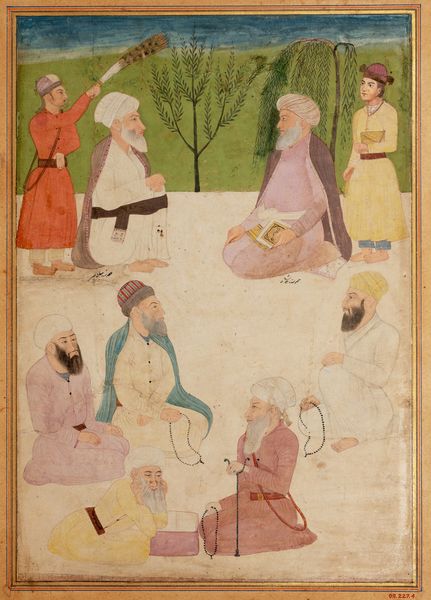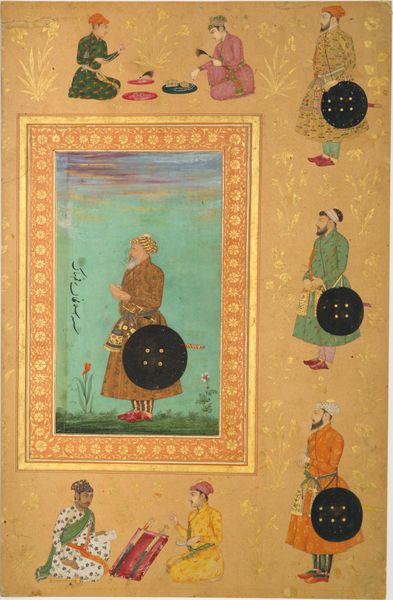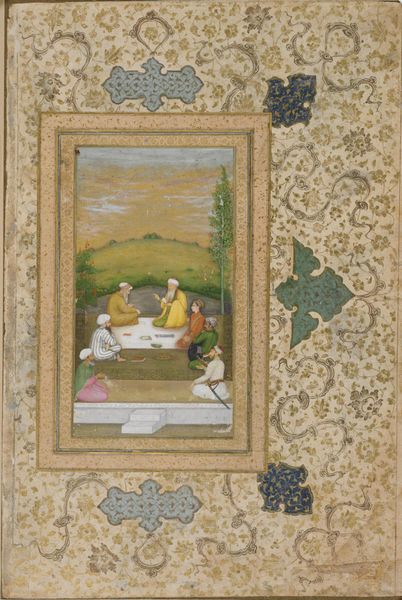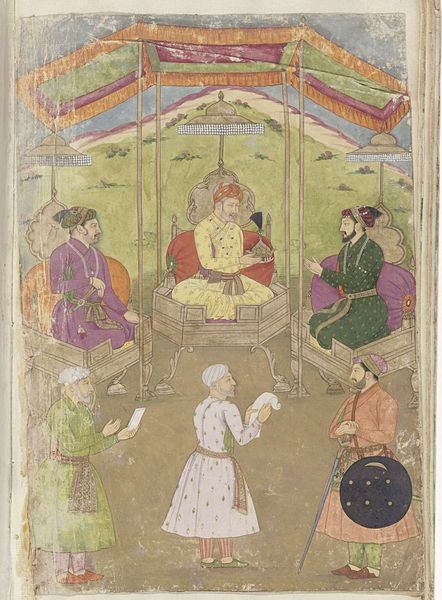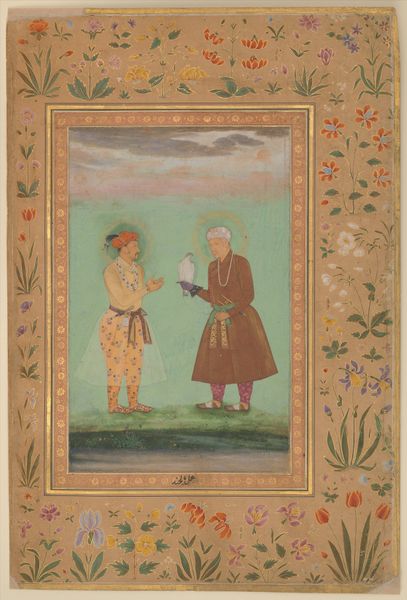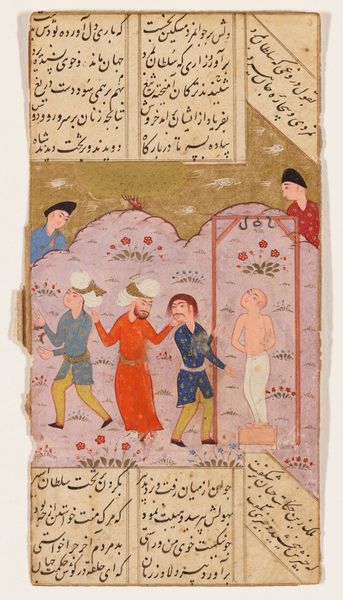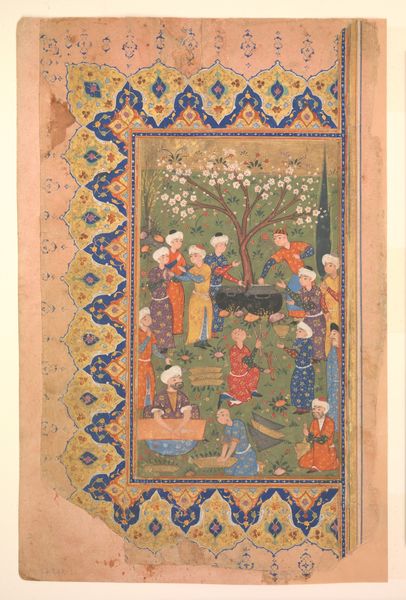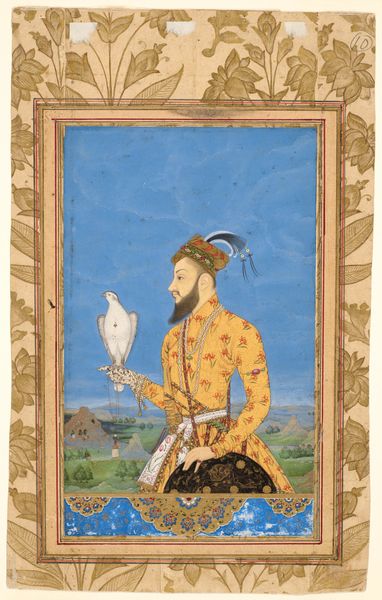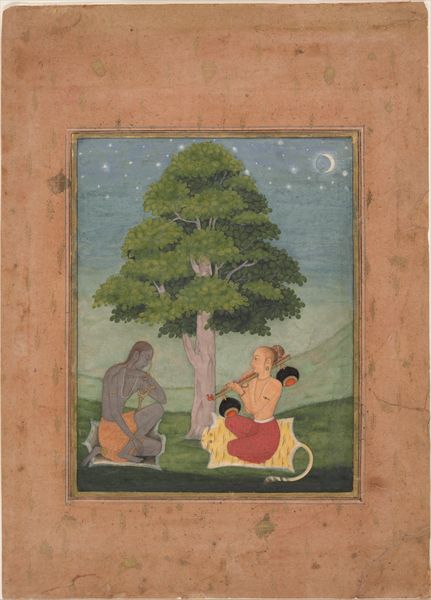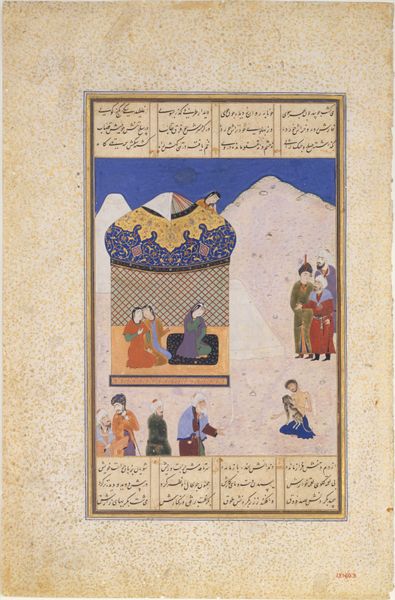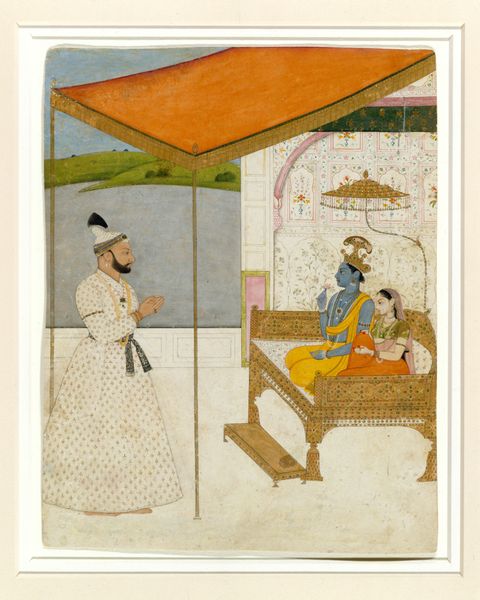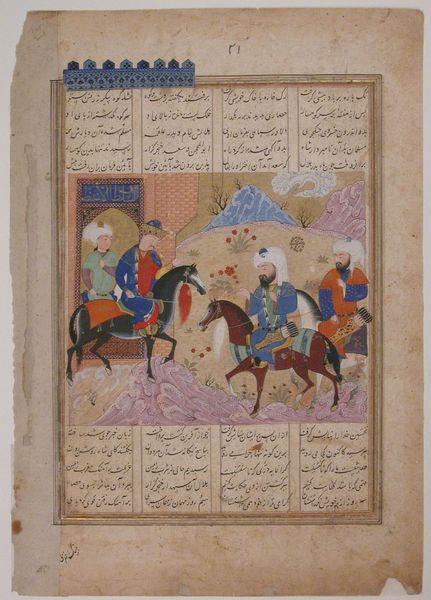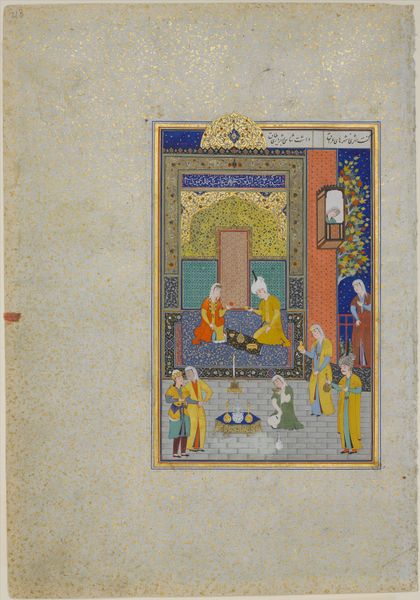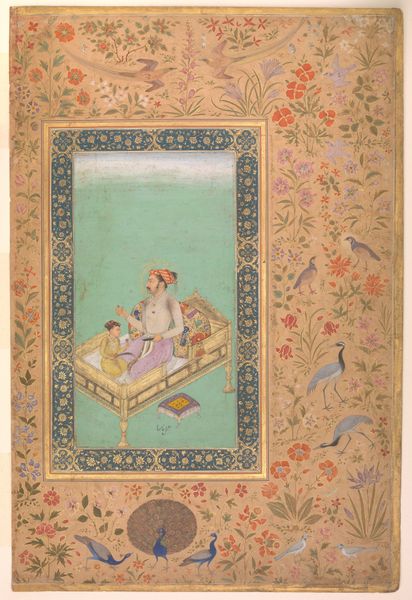
painting, paper, watercolor
#
portrait
#
water colours
#
narrative-art
#
painting
#
asian-art
#
figuration
#
paper
#
watercolor
#
coloured pencil
#
islamic-art
#
miniature
Dimensions: 15 3/8 x 11 3/8 in. (39.05 x 28.89 cm) (sheet)
Copyright: Public Domain
This painting, "Portrait of Fakir Khan and His Sons," of unknown date, presents a formal arrangement with a focus on symmetry and balance. The figures, set against a stylized landscape, are meticulously arranged in a horizontal frieze. This composition flattens the space, emphasizing surface pattern over depth. Notice the shields, placed symmetrically at the bottom – their circular forms anchor the composition. The artist employs a limited color palette, dominated by earth tones, which creates a sense of harmony. However, the pops of pink in the garb of the youngest son adds a layer of visual complexity and is strategically placed to draw the eye. The lack of sharp perspective and the emphasis on decorative elements flattens any established sense of depth. What does this mean? This directs our attention to the painting's surface, reminding us that we are looking at a constructed image.
Comments
minneapolisinstituteofart almost 2 years ago
⋮
Fakir Khan, shown seated here with his four sons, was a member of Shah Jahan's court (reigned 1627-58) at Delhi; each sitter is identified in Persian. Royal portraiture was introduced to India with the Mughal conquest in the sixteenth century. Many of these idealized portraits reveal subtle modes of representation through which Indian rulers reasserted their power and achievements. For instance, Fakir Khan's royal status is conveyed by the subtle aureole behind his head, while the family's political importance is indicated by the ceremonial swords, daggers, and shields each member possesses. Finally, the hierarchy within the family is indicated by the size of each figure; the sons are otherwise all treated as miniature adults, with little indication of age based on facial features.
Join the conversation
Join millions of artists and users on Artera today and experience the ultimate creative platform.
